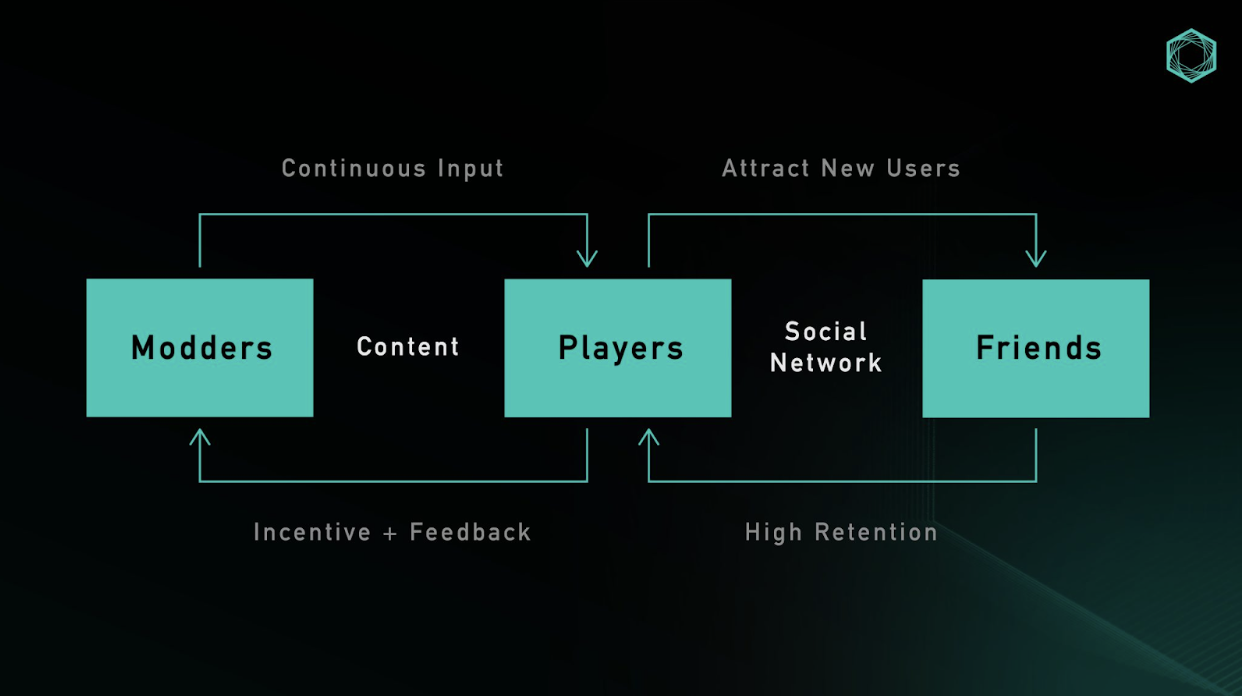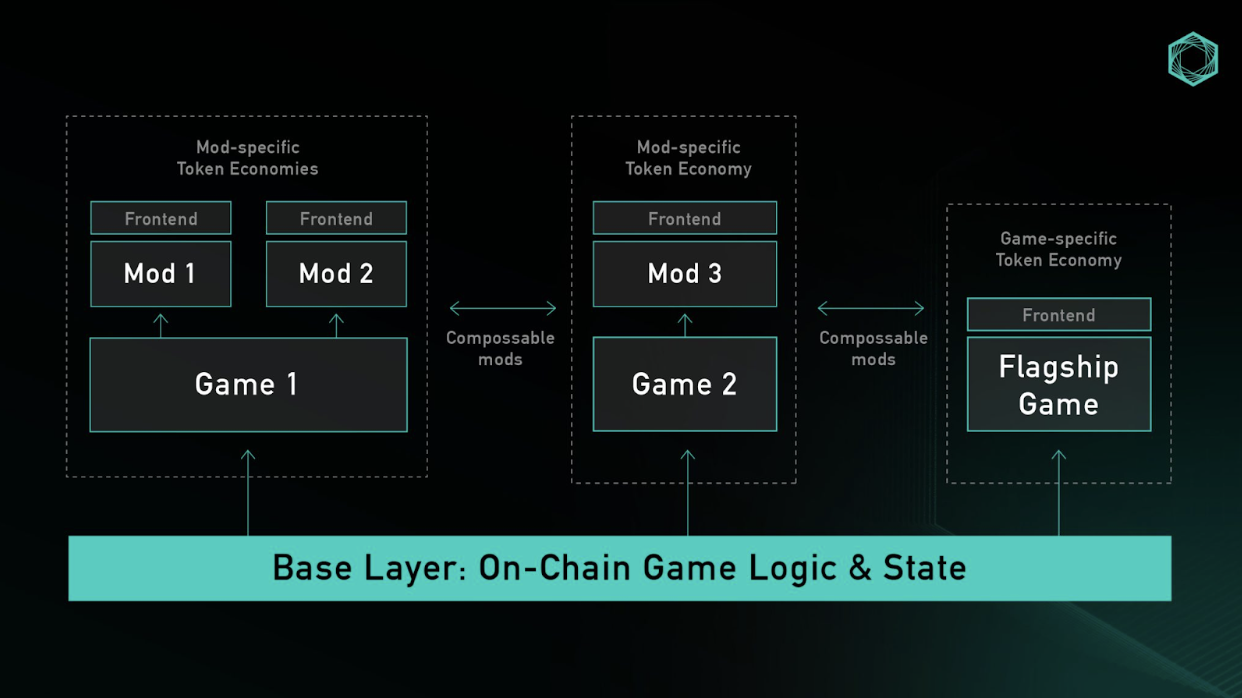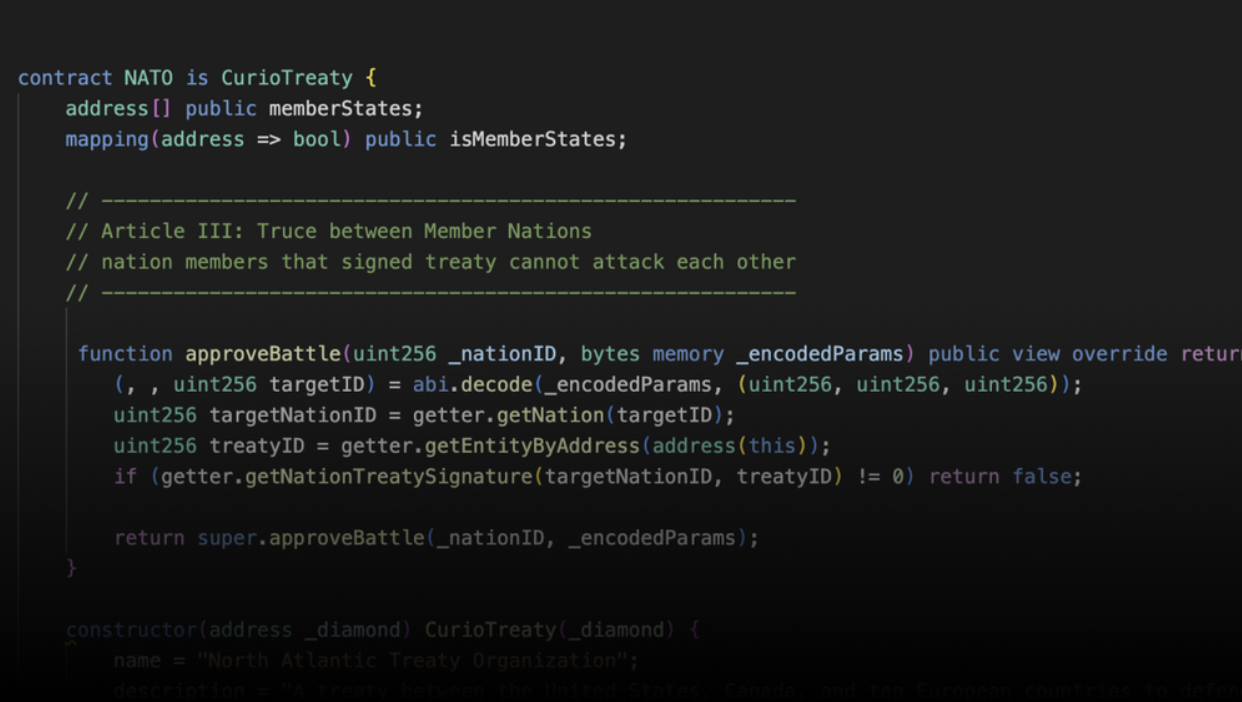Interpreting the Commitments and Risks of Full-Chain Games
Written by: Hailstone Labs
Full-chain games (FOCG) have become a new frontier in the blockchain gaming space, attracting the attention of researchers, developers, and investors with their compelling value propositions, such as composable modifications and smart contract-driven social contracts. However, the technical implementation of FOCG presents a series of unique challenges that merit a deeper exploration of the advantages they promise.
Background
To understand the complexity of FOCG, one must first grasp the concepts of game state, game ticks, and tick rate.
Game State
- A snapshot of all relevant information and data that describes the current state of the game at any given moment.
- It encompasses various aspects, including the positions and attributes of game objects, player scores, health points, game progress, and other variables that define the current state of the game.
- The game state is typically updated and modified over time based on player input or other events.
Game Ticks
- Also known as frames or updates, these are discrete time units used to measure game progress.
- Each game tick represents an iteration or cycle of the game’s main loop, during which game logic and physics calculations are performed.
- Each tick usually updates the game state based on current input, processes AI behavior, handles collisions, and performs other necessary calculations to advance the game.
Tick Rate
- The frequency at which game ticks occur per second.
- It indicates how many times game logic and rendering are updated and refreshed in one second, typically measured in hertz (Hz) or frames per second (FPS).
- For example, a tick rate of 60 Hz means that game logic updates 60 times per second. A higher tick rate generally leads to smoother gameplay and more responsive controls, but it also requires more computational resources.

Web 2.0 Games
In the Web 2.0 gaming model, all game components, including game state, logic, and data, are stored off-chain. It is locally managed by centralized servers with robust computing and networking capabilities to handle real-time gaming and synchronization.
Over the years, a combination of efficient game logic coding, hardware advancements, and optimization techniques has made the development of high tick rate games possible.
Web 2.5 Games
Web 2.5 games represent a more decentralized form of gaming by storing in-game assets on-chain. These games often involve issuing ERC-20 game tokens and tokenizing in-game assets like skins as NFTs. This addresses the issue of asset ownership in traditional games, as players can fully own and trade these assets on-chain.
However, the operation of game state, game ticks, and tick rate in Web 2.5 games is isomorphic to that in Web 2.0 games. One of the inherent structural and computational limitations of blockchain is the lack of native game ticks. Therefore, compute-intensive components are handled off-chain in Web 2.5 games.
One issue present in both Web 2.0 and 2.5 games is the lack of transparency and censorship resistance. Game logic, such as item rarity, drop rates, and true randomness, is often not publicly disclosed and cannot be proven fair. Players must trust what game developers claim and decide without the ability to independently verify them. Additionally, a centralized entity (like a game studio) has the power to modify, censor, or control the game and retains the ultimate decision-making authority to terminate the game, which can be executed at any time or as necessary.
Full-Chain Games
Full-chain games involve storing the entire game logic, state, and data on-chain. The blockchain serves as a decentralized game server where players can participate in and contribute to a shared game state without needing to trust one another.
Client-agnostic full-chain games can be built by multiple front-end operators, all interacting with the same game logic. This approach is similar to Liquity's decentralized front-end, which can present the same game logic with different aesthetics and user interface elements. Third-party developers can create profitable mods by creating NFT characters or using ERC-20 tokens that interact with the underlying game logic.
By placing game assets, game state, and loops on a trusted neutral blockchain, censorship and platform risks can be mitigated. This allows on-chain games to scale securely, especially those with high-risk elements.
However, as mentioned above, the lack of native game ticks on the blockchain is a significant limitation. All blockchains have block confirmation times, which introduce latency issues. Depending on the blockchain, the time required for a transaction to be verified and included in a block can range from a few seconds to several minutes. Therefore, early full-chain games were blockchain-based games with asynchronous game elements, such as turn-based collectible card games.
For other game types, such as real-time strategy games that require synchronous or near-synchronous feedback, scaling solutions need to be employed. Here are some examples:
- Argus's World Engine - This is a sharded Layer 2 blockchain SDK with game shards that resemble high-performance game servers, specifically designed to handle in-game computations. This is achieved by decoupling game execution (game shards) from smart contract execution (EVM shards). Their first game shard implementation - Cardinal, achieves a higher tick rate of 20 blocks per second and can integrate directly with existing game engines like Unity.
- Curio Research - Built a custom tick chain implementation on the OP stack (using Caldera as RaaS). This is a high-throughput ECS-based game engine that can support their upcoming real-time strategy game.
- Dojo - This is a "verifiable" game engine built on Starknet that can run game sessions off-chain, reducing the need to record every player action on-chain. Instead, proofs can be generated at specific intervals to verify the correctness of previous actions within that interval, with these proofs processed off-chain.
Finally, for games with incomplete information, such as those featuring fog of war, effectively implementing zero-knowledge proofs (e.g., Dark Forest using zk-SNARKs) is also key to establishing a fully on-chain experience while ensuring fairness.
The Promise of FOCG
Composable Modding
We are currently witnessing a new era in gaming where players desire the ability to personalize, modify, and seamlessly integrate their identities into games, requiring a level of customization that can only be achieved through UGC or modding. The popularity of mods in Web 2.0 games like Minecraft and Roblox exemplifies this trend.

Roblox's Modding Ecosystem
In these games, a new category of "players" has emerged: modders, who actively contribute to the growing library and ecosystem of mods. In Roblox, modders can earn revenue from their content in the form of Robux through game passes and/or in-game purchases. The rewards from building and operating successful mods can rival those of independent game development. Independent studio Uplift Games, known for Adopt Me!, employs around 40 people and generates $60 million annually.

Roblox Flywheel
This dynamic creates a self-reinforcing positive feedback loop with significant network effects. As modders continually create new games and content, players become more immersed, and new users are drawn in through social networks. As the player base expands, the incentives and feedback systems for mods encourage more players to become modders. The symbiotic relationship between modders and players, combined with intuitive development tools, drives the emergence of unique virtual worlds, experiences, and communities within individual games.
However, mods in traditional games often exist in isolation, lacking a universal framework for meaningful interaction. While this may be intentional, new inputs and contributions from modders are often still confined to isolated virtual worlds. Even when cross-mod interactions do occur, their impact on gameplay is often negligible, such as using the same aesthetics across different mods (known as "allowed gear" in Roblox).
The potential for composable modding is a significant value proposition of FOCG. Upcoming FOCG projects are taking various approaches to build their tech stacks, but a common method is to allow third-party developers to interact directly with game logic through smart contracts, enabling them to:
- Create new mods (with mod-specific token economies)
- Expand the functionality of games and mods by adding new items, characters, and maps

Composable Modding Ecosystem on-chain
One can envision that if the Mod A community introduces a new resource, it should be directly compatible with the world of Mod B, allowing players there to plant, harvest, and trade that resource.
This incentivizes modders to consider not just individual mods but all related mods when designing new features. Composable modding expands the potential for monetization and the dissemination of best practices. However, to achieve this on-chain composable modding and ensure a consistent gaming experience, modders may need to operate within a limited design space compared to traditional games.
Smart Contracts as Social Contracts
In traditional games, players, teams, and guilds rely on informal and unenforceable agreements to interact beyond the predefined game mechanics. This approach has its limitations, especially in high-stakes games where breaches of agreements can lead to significant consequences.
In 2014, a massive battle known as the "Battle of B-R5RB" occurred, involving thousands of Eve Online players. Before the battle, alliances reached informal agreements and treaties to collectively fight a common enemy. However, during the battle, one alliance unexpectedly betrayed its allies, violating the agreement and resulting in over $300,000 in game asset losses.
The treaties explored by Curio Research highlight the immense potential of smart contracts in facilitating complex social interactions between players or teams. Through game-specific smart contracts like Treaties, agreements can be formalized between players and executed trustlessly when predetermined conditions are met.

CurioTreaty
Treaties can have many meanings. It can be an agreement similar to NATO, where you are prohibited from attacking other committee members after joining and paying dues. It can be a national bank issuing a token backed by USDC, forcing trading partners who sign the agreement to strictly use your national currency the next time they exchange in-game in an AMM. ------ Kevin Z from Curio
The customizability and modularity of these in-game smart contracts can extend social dynamics beyond the game and allow for direct interactions with other on-chain ecosystems (such as DeFi protocols).
Obstacles to FOCG
There is no doubt that FOCG has the potential to innovate modding models and social interactions on-chain. However, as we take a closer look at these promises, a series of questions arise.
Technical Limitations
In addition to the lack of native on-chain game ticks, there are various technical limitations to consider:
- High gas costs and low TPS - The bottlenecks of most mainnet chains make it challenging to support synchronous gaming and concurrent game sessions/instances.
- Vulnerability of on-chain randomness - Validators can see the results of randomness before confirming on-chain, leaving room for manipulation (requiring VRF/ZKP solutions).
- Machine cheating - Decentralized gaming entities have limited means to regulate and enforce anti-cheat measures. Bots can interact with games like human players without any inherent restrictions.
- User interface and user experience are not intuitive for Web 2 gamers - Using dApps often requires creating wallets, signing transactions, bridging assets, etc. It is crucial to simplify this process (i.e., wallet account abstraction) to maximize the onboarding of non-crypto-native gamers.
- Security - When FOCG possesses assets of real value that can interact with DeFi, exploiting vulnerabilities becomes irreversible, potentially having a permanent impact on the entire FOCG ecosystem.
2. Costs of Composability
The promise of composable modding introduces certain trade-offs, especially when we consider that on-chain implementations may hinder the factors that initially made modding ideal and successful.
For Players
Successful Roblox mods, such as Jailbreak, Arsenal, and Adopt Me!, have amassed large followings, with total visits exceeding 40 billion. Each mod offers unique game mechanics, rules, environments, and in-game assets:
- Jailbreak immerses players in a narrative of jailbreaks and police chases.
- Arsenal provides a Call of Duty-like FPS experience.
- Adopt Me! revolves around adopting and caring for virtual pets.
From the players' perspective, the appeal of these mods lies primarily in their unique game mechanics, storytelling, and thematic elements. Players can compare playing Roblox to logging into Steam, as both offer a diverse range of game types and experiences for players to explore.
The community has attempted to make mods more interactive, such as in the "Pixelmon Modpack," where a set of pre-configured Minecraft mods can be downloaded. However, these mods still run in isolation from other modpacks on local servers. Currently, the demand for such interactive mods among players seems low, and the lack of an official framework in the primary modding ecosystem reflects this.
For Modders
Physics and Game Balance
In a permissionless modding ecosystem, achieving composability requires careful consideration of game physics and game balance, which are crucial for ensuring a fair and enjoyable gaming experience.
In traditional games, modders can freely modify game physics based on their desired game mechanics, as the mods they create do not necessarily need to interact with other mods. For example, there are some basic physics principles in Roblox's game world, but each mod can flexibly define and implement its own physics rules. Jailbreak has specific physics rules related to vehicle control and collisions, while Adopt Me! has a unique physics system related to pet movement. It is this flexibility that allows Roblox to attract and accommodate modders with expertise across various genres, such as FPS, horror, and casual games.
To make mods truly composable, consistent game physics must be maintained across all mods. As new items, economies, and systems are added to the game without permission, considering game balance introduces additional inflexibility. For instance, FOCG requires precise calculations and framework designs to prevent new characters or strategies from becoming overly powerful. Additionally, updating the entire tech stack (including front-end and related contracts) with new inputs requires complex coordination.
One can imagine that fully composable modules would create chaos in this regard, limiting new inputs to mere aesthetic changes rather than allowing inputs that affect game outcomes. Such consistency may hinder the diversity of modders and lead to homogenization of the modding ecosystem.
A permissioned modding ecosystem could alleviate some of these issues, but this would contradict the fundamental principles of autonomous worlds that FOCG should adhere to.
Specific Types of Game Logic and Infrastructure
Different types of games require different refresh rates, making it impossible to build new mods for game types that rely on higher refresh rates than what the current FOCG infrastructure can support.
As a result, most upcoming FOCG will focus on initially building infrastructure for specific games to meet their scaling needs before attempting to make it more general.
There is a noticeable pattern among these teams - almost all teams focus on building infrastructure that supports strategy games (such as Dark Forest, Treaties, Primodium, etc.). On one hand, strategy types are relatively easier to implement and can fully benefit from the fully on-chain characteristics through instances like Treaties. On the other hand, specific types of tech stacks may limit the diversity of players and modders, thereby cutting into the full potential of composable modding.
Should Games Be Fully On-Chain?
In an ideal scenario, the value propositions of FOCG, such as composable modding, would be highly valuable for both players and modders, allowing traditional game studios to incorporate these elements into their off-chain or hybrid systems and benefit without being constrained by design space.
For example, in-game assets could be embodied as NFTs, combined with smart contracts to implement executable social contracts. Meanwhile, the remaining components could operate off-chain, including a modding ecosystem redesigned through appropriate frameworks to ensure composability.
The Case for FOCG
While this scenario is indeed possible, I remain open to the idea that FOCG may surpass these hybrid games in specific domains. I believe the most competitive cases for FOCG are high-risk games driven by player communities that demand not only on-chain assets and credentials but also the entire game logic to be on-chain.
To illustrate this, consider the shutdown of Marvel Heroes. It was a free online action RPG featuring characters from the Marvel universe. In November 2017, the game abruptly announced its closure, triggering a wave of refund requests. However, due to clever legal technicalities, consumers found themselves with neither explicit rights to compensation nor access to purchased in-game assets.
"You agree that Gazillion and its affiliates, licensors, agents, or employees shall not be liable to you or any third party for any damages arising from system revisions, supplements, suspensions, or terminations, or any termination of licenses. Gazillion reserves the right to delete or clear any of your content at its discretion when that content exceeds the predetermined time limit and/or quantity, or when the system or any of its components require maintenance or upgrades." @GIBiz
Simply putting assets on-chain does not fully address the issue of game studios maliciously exiting, as game state and progress would still be lost, rendering those assets useless in-game. Furthermore, in such cases, studios have no obligation to open-source the game. FOCG can solve this problem.
Provable fairness can be related to in-game mechanisms and outcomes. Imagine a group of players participating in a battle against a common enemy, where the highest damage dealer has a chance to receive a high-value item drop. Or imagine a 4X real-time strategy game where the generation of locations and resource proximity is random.
In these scenarios, FOCG can ensure that the outcomes of battles or randomness are provably fair. This trustless environment benefits not only players but can also extend to new forms of "players," including speculators betting on game outcomes through smart contracts. Ensuring unmanipulated game results and permanence (as game state and logic can be forked) would allow high-risk game ecosystems to truly scale without any platform risk.
I believe there are several other elements that need further exploration and coordination. I look forward to seeing the following:
- Further exploration of true randomness that cannot be tampered with by miners, oracle operators, or other players. There is a need to mitigate any possibilities of front-running or observing outcomes before they are confirmed on-chain.
- The practicality of on-chain randomness. If not feasible, there is a need to accelerate and expand off-chain randomness solutions.
- Architectural optimizations that better support concurrent game sessions/instances without sacrificing composability.
- Game mechanics and social dynamics that can interact directly with adjacent on-chain ecosystems. High-risk FOCG internal or derived economic systems would greatly benefit from composability with DeFi functionalities.
- Better alignment of incentive mechanisms for players and modders. As the boundaries between developers and players become increasingly blurred, new business models may emerge, similar to the widespread adoption of free-to-play models in mobile gaming.
- Decentralized game balance governance structures to accommodate permissionless modding.
I am hopeful that games built entirely on-chain can generate new primitives, leading to new paradigms in gaming that fully leverage the advantages offered by blockchain, rather than just partial advantages.









